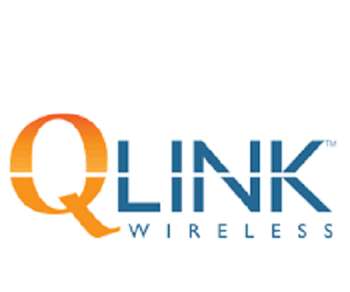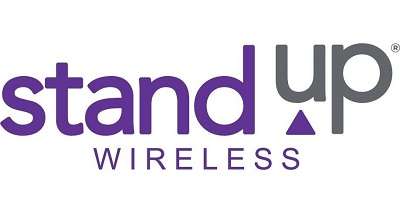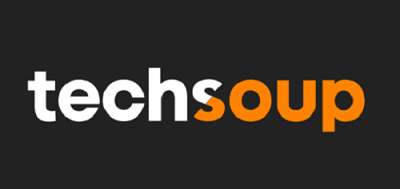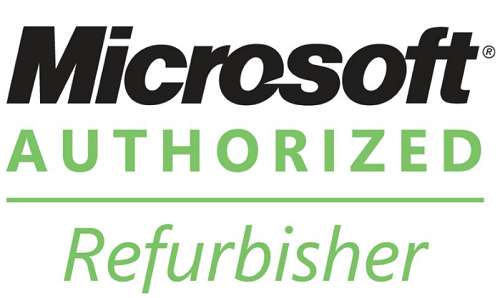Obtaining access to modern technology is crucial in today’s world, and it has grown more and more essential for those in low-income households to have access to devices such as tablets.
Tablets are essential for various purposes like education, job searching, and staying in touch, and without them, those with low incomes are at risk of being left behind in the digital revolution.
Fortunately, there are a few free tablet options out there for those in low-income homes. This article will explain the various methods of obtaining free tablets, including government programs, service providers, and nonprofits. We will also provide step-by-step instructions on the application process and necessary documents.
How to Get Free Tablet For Low-Income Families

Government Programs for Free Tablets
Government programs that provide free devices are primarily aimed at providing low-income families with access to technology and the internet. These programs are typically administered by government agencies, such as the Federal Communications Commission (FCC), or state-level organizations.
Following you will know about a few top programs for free tablets –
Lifeline Assistance Program
The most famous government program for intelligent devices is the Lifeline program. The Lifeline generally offers discounted or free phone and internet services to low-income households. The Federal Communications Commission or FCC manages the program and it is eligible for households in every state and territory in the United States.
Eligibility requirements:
Of course, not everyone is eligible for the program. Though the requirement varies from state to state, they generally follow some of the same rules. These include –
Income-based: Applicants must have an income at or below 135% of the federal poverty guidelines, or participate in certain government assistance programs such as a free tablet with Medicaid, SNAP (Supplemental Nutrition Assistance Program), or SSI (Supplemental Security Income). Or,
Residency-based: Applicants must be living in the United States and have a valid U.S. mailing address.
Participation in other programs: While income requirements are a primary factor in determining eligibility for the Lifeline program, applicants who are participants in certain government assistance programs, such as Medicaid, SNAP, or SSI, automatically qualify for the program. It’s important to note that the Lifeline free tablet program is limited to one line per household, and households cannot receive benefits from multiple providers.
Furthermore, households that already have a landline or internet service may not be eligible for the program, unless they can demonstrate that they are paying more than the federal benefit rate. This requirement helps ensure that the program is targeting those who need it most and prevents unnecessary duplication of benefits.
The Lifeline program is a vital initiative that provides free or discounted phone and internet services to eligible low-income households. By providing access to essential communication tools, the program helps bridge the digital divide and create a more equitable and inclusive society. It’s important that eligible families take advantage of this program to access the resources and opportunities that the internet provides.
How To Apply For Lifeline Program
To know the process of an application for free tablet from the Lifeline program is below-
First, you need to identify a Lifeline service provider in your area. You can find a list of approved providers on the Universal Service Administrative Company (USAC) website. Then, c contact the provider you have chosen and ask about their enrollment process.
Some providers may have an online application form and that makes the whole process a lot simpler. While others require you to submit a paper application (Though, nowadays, there are hardly any that require physical paper.)
Then, gather all the necessary documentation required for the application. This may include proof of income, proof of participation in a government assistance program, or proof of your eligibility through a disability. Lastly, submit your completed application and required documentation to the service provider.
Affordable Connectivity Program
The Affordable Connectivity Program (ACP) shares many similarities with the Lifeline free tablet program. Previously known as the Emergency Broadband Benefit (EBB), the ACP was established during the Covid-19 pandemic to provide low-income households with smart devices.
The EBB program helped ensure that low-income households could keep up with their work, education, and other essential activities during a time of crisis. When the program ended, the government did not shut it down completely, but instead, rebranded it under the new name of ACP.
Today, the ACP program provides qualified households with access to the internet and digital literacy resources, helping to bridge the digital divide and create a more equitable and inclusive society. Additionally, the program offers free devices to eligible families, enabling them to take advantage of the many benefits of modern technology.
By providing access to affordable internet services and digital tools, the ACP program is playing a critical role in promoting educational and economic opportunities for low-income households. It is an essential initiative that demonstrates the government’s commitment to providing essential resources and opportunities to all, regardless of their financial status or background.
Eligibility requirements For Affordable Connectivity Program
Again the requirements vary from state to state. Here’re the general points-
- Your household income is 200% or less than the Federal Poverty Guidelines, based on your household size and state.
- You or someone in your household participates in certain government assistance programs such as SNAP, Medicaid, WIC, or other programs.
- You already receive a Lifeline benefit.
- If a member of your household, like a child or dependent, participates in programs like the Free and Reduced-Price School Lunch Program, your household also qualifies.
How to apply for Affordable Connectivity Program
You can use several different methods to apply for the Affordable Connectivity Program. The first way to apply is through the government’s official website –
- Visit the ACP application page on the government’s website, at https://nv.fcc.gov/lifeline/?id=nv_flow&ebbp=true
- Fill out the online application form with all the necessary information and documentation.
- Submit the form once you have completed it.
Alternatively, you can also apply for the ACP program via mail by following these steps:
- Print out the ACP application form at https://www.affordableconnectivity.gov/wp-content/uploads/ACP-Application-Form-English.pdf
- Fill out the form and attach copies of the required documents.
- Mail the package to the ACP Support Center, at – PO Box 7081, London, KY 40742.
The last way to apply for the ACP is by contacting a provider directly. You can find the providers available in your area by visiting the FCC’s website at https://www.fcc.gov/affordable-connectivity-program-providers.
Once you find a suitable provider, you can visit their website and fill out their online application form. If you are unable to find the application form on the website, you can contact the provider’s customer support service for assistance.
Providers That Offer Free Government Tablet For Low Income Families
1. Q Link Wireless

QLink Wireless is a provider of wireless services that offer free government tablets to low-income families through the Lifeline and ACP programs. Eligible households can also receive free talk time, text messages, and high-speed data. They have two options under the Lifeline program, including Bring Your Own Phone and Keep Your Own Number.
They also offer free government tablets for eligible households. Their free always-on plan includes features such as unlimited data, text messages, talk time, picture messages, voicemail, three-way calling, access to free Wi-Fi locations, emergency service calls to 911, a free sim card, and its activation, and more.
The company operates one of the largest 4G LTE/5G networks in the US, with upgraded coverage and faster internet speeds. Interested individuals can find the online application form for a free tablet on their official website at https://qlinkwireless.com/.
2. Assurance Wireless
Assurance Wireless is a well-known provider of exceptional network coverage and excellent service plans in the US. However, what many people may not realize is that the company also offers low-cost or free internet services, phone plans, and even free government tablets and smartphones through the Lifeline and ACP programs.
These programs are an essential initiative that helps to bridge the digital divide and ensure that everyone has equal access to critical resources and opportunities. While these programs are only available in selected locations, they provide a valuable service to those who need it most.
It’s important to note that the benefits provided by Assurance Wireless through the Lifeline and ACP programs cannot be transferred to another person. If you’re interested in finding out if their services are available in your state, be sure to check their official website at assurancewireless.com.
3. StandUp Wireless

StandUp Wireless is a reputable provider of wireless service that offer free government tablets to low-income families through Lifeline and ACP. Their plans include unlimited talk time, text messages, and internet data, making it an ideal option for those who need to stay connected but have limited financial resources.
One of the best features of StandUp Wireless is that they provide nationwide coverage, which means that you can stay connected with your loved ones no matter where you are. With their plan, you will get up to 10 GB of high-speed data – 5G/4G LTE.
Under the ACP and Lifeline program, they offer an 8-inch tablet for just $10.01, which is a great deal for those who need a tablet but can’t afford one. They also provide a discount of around $100 on certain devices, making them even more affordable.
If you want more information about StandUp Wireless and its services, you can visit its website at https://standupwireless.com/apply-now/ or contact them at 888-225-5322.
4. Easy Wireless
Easy Wireless is a provider that goes above and beyond in providing free government smartphone service to eligible families. Their services include free unlimited data and hotspots, as well as free unlimited talk and text. In addition to these benefits, Easy Wireless offers various services, such as a free sim card kit and activation, free access to Wi-Fi hotspots, and features like free voicemail and free emergency service calls.
Their affordable plans are particularly useful for low-income families, and they even offer an 8-inch tablet worth $120 in value for just $10.99. It’s important to check their official website to see if their services are available in your area and to confirm your eligibility for the Lifeline and Affordable Connectivity Program.
Through their commitment to providing essential communication tools and services, Easy Wireless is helping to bridge the digital divide and create a more equitable and inclusive society. They are a valuable resource for low-income families who may otherwise be unable to access the internet and other critical resources.
Non-Profit Organizations for Free Tablets
Non-Profit organizations are an easy way for low-income families to get a free tablet. These are several non-profit organizations that provide devices to students, jobless youth, and others to keep them up with the digital world. Let’s check some of the top non-profit organizations –
5. TechSoup

TechSoup is a non-profit organization that offers technology resources, including free and low-cost tablets, to other non-profit organizations and libraries. The organization has a wide range of partners, including Microsoft, HP, and Cisco. They provide technical aid to organizations that are working to make a positive impact in their communities.
Individuals or households can apply for free tablets through the organization by providing information about their non-profit organization, and how the technology can be used to benefit the community. Eligibility criteria and the application process are available on the TechSoup website.
6. Computers with Causes
Computers with Causes is an organization that is committed to providing free laptops and computers to low-income families, veterans, and disabled individuals. Through their network of partners and donors, they are able to offer critical technology resources to those in need.
To apply for a free laptop or computer, interested individuals must fill out an online application form and provide information about their need for the device and how it can improve their lives. Eligibility criteria and the application process can be found on the Computers with Causes website.
The organization’s mission to provide access to technology resources to those who need it most is a vital initiative that underscores the importance of digital inclusion. By bridging the digital divide and providing access to essential technology resources, Computers with Causes is helping to create a more equitable and inclusive society.
7. World Computer Exchange
World Computer Exchange provides free and refurbished computers to individuals in need, including children, disabled adults, and low-income families. They work with local non-profit organizations, schools, governments, parties, and libraries to distribute the computers.
To get a free tablet, individuals need to apply and explain their needs and how a computer will help them become more independent. The organization has provided over five million free computers to disabled individuals. Eligibility criteria may vary based on the location and time. By visiting their website, you can get the most up-to-date information.
8. Microsoft Registered Refurbishers

Microsoft is a leading technology company that is committed to improving the lives of low-income individuals and disabled people. Through their Registered Refurbishers program, Microsoft offers free computers, laptops, and tablets to eligible individuals.
To apply for the program, interested individuals must fill out an online application form and provide information about their need for the device and how it will help them. Eligibility criteria for the program may vary, but generally include income limitations and proof of disability.
9. Computers for Learning
The U.S. General Services Administration (GSA) is responsible for administering a program that provides free surplus federal computers to schools and educational non-profit organizations. The program’s website allows eligible organizations to request computers, software, and other technology resources.
Eligibility criteria for the program may vary depending on the organization, but generally, schools and non-profit organizations that serve disadvantaged communities are eligible to participate. Interested organizations must register on the program’s website and submit a request for the technology they need. However, it is important to note that the program is subject to availability, and organizations are only able to request a certain number of devices per year.
Through this program, the U.S. General Services Administration is helping to provide critical technology resources to schools and non-profit organizations, thereby enabling them to better serve their communities. By ensuring that disadvantaged communities have access to essential technology resources, the program is helping to create a more equitable and inclusive society.
10. SmartRiverside

A program run by the city of Riverside, California, SmartRiverside provides free internet and digital devices to low-income families and individuals. The eligibility for the program is based on income and family size, with priority given to households with children in school. To apply for the program, individuals must fill out an online application and provide proof of income and residency.
Once approved, participants will be provided with a free internet service and the option to purchase a discounted computer or tablet. The program also offers digital literacy training to help participants learn how to use the internet and digital devices effectively.
SmartRiverside is a partnership between the city of Riverside, local non-profit organizations, and private companies. It is funded by a combination of government grants and private donations.
Other Ways to Get Free Tablets
11. Second-hand market
If you’re unable to find free tablets from the organizations mentioned earlier, the second-hand market is an excellent alternative. Websites such as Amazon, eBay, and Craigslist are popular options for buying used tablets at a fraction of the cost of a new one. These websites allow you to search for tablets based on brand, model, and condition.
However, when purchasing a used tablet, it is important to exercise caution and take a few things into consideration. First, you should research and compare different options to get an idea of the seller’s credibility and the quality of their products. Additionally, be sure to read the product description carefully and check for any damages or defects that may affect the tablet’s functionality.
Another important aspect to consider is the warranty. Many second-hand tablets may not have a warranty or have a limited one. It’s good to check with the seller if they can provide one or if they are willing to give you a return policy if the device has any defects.
You can also purchase a refurbished tablet. These tablets have been returned to the manufacturer, inspected, and repaired if necessary before being resold. They often come with a warranty and can be a great option for those looking for a cheaper tablet.
12. Charitable donations
Low-income families in need of tablets can receive assistance from several charitable organizations, non-profit groups, and foundations with a mission to provide essential technology resources. However, it is important to note that not everyone may qualify for these charitable donations, and applicants must meet certain eligibility criteria, such as being a low-income family, having a child in school, or being a senior citizen.
The process of applying for a free tablet may vary depending on the organization, but generally involves filling out an online application form and providing proof of income or other required documentation. Eligibility criteria and application requirements should be outlined on the organization’s website.
By offering free tablets to low-income families, charitable organizations and non-profit groups are helping to bridge the digital divide and ensure that everyone has access to essential technology resources.
The work of these organizations is crucial in creating a more equitable and inclusive society, and it underscores the importance of digital inclusion in today’s digital age.
You can find these kinds of organizations everywhere. Examples of a few top organizations that provide charitable donations include:
- The One Million Project: provides free tablets to low-income children to support their education
- The Kids in Need Foundation: provides free tablets and technology to children from low-income families to support their education
- The National Cristina Foundation: provides free technology to nonprofit organizations and schools serving individuals with disabilities and other disadvantaged communities.
You can also look into different churches, as sometimes they also offer free devices. Or, if you live near a big church, you can talk to the priest and ask for his help.
13. Crowdfunding
Crowdfunding has emerged as a popular method for individuals and organizations to raise funds for their projects and ideas by soliciting small contributions from a large number of people, often through the internet. Various crowdfunding platforms, such as Kickstarter, GoFundMe, and Indiegogo, allow individuals to create campaigns to raise money for a specific cause or project.
One potential way to obtain a free tablet is through crowdfunding, by creating a campaign that explains your need for a tablet, how it will be used, and why you are unable to afford one on your own. You can set a fundraising goal for the amount of money needed to purchase a tablet and ask people to contribute whatever they can.
There aren’t any eligibility requirements for the program. But, to get what you want through crowdfunding, you will need to create a compelling campaign that resonates with people and convince them to contribute to your cause. You can also reach out to friends, family, and community members to share your campaign and ask them to contribute.
Keep in mind that success in a crowdfunding campaign is not guaranteed, and reaching the goal amount may depend on the number of people who contribute and the size of their contributions.
You may also like to read: How To Get Free Tutoring For Low Income Families
Final Verdict
Low-income families have various options for obtaining free tablets, as detailed in this article. These options include government assistance programs like the Lifeline Assistance Program and the Affordable Connectivity Program, non-profit organizations like World Computer Exchange and Microsoft Registered Refurbishers, and community programs such as Smartriverside. It is also possible to purchase a second-hand tablet at a discounted price or to receive a free tablet through charitable donations or crowdfunding.
Each option will have its own specific eligibility criteria and application process, requiring individual research to determine the best fit for your situation.
It is essential to research and understand the requirements of each program carefully to determine eligibility and increase the chances of obtaining a free tablet. With the support of these programs, low-income families can access essential technology resources and participate in today’s digital age on equal footing.
Access to technology has become increasingly important in today’s society. It can provide low-income families with access to educational and job opportunities, as well as connect them with essential services and resources. Providing free tablets to low-income families, it can help to bridge the digital divide and provide equal access to technology for all.
